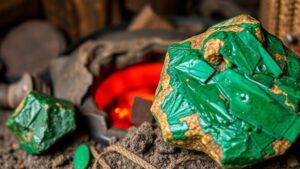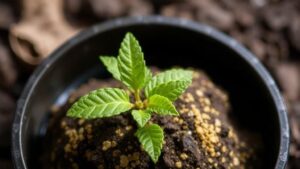Recovering Gold From Hidden Placer Deposits Along Desert Riverbanks
Recovering Gold From Hidden Placer Deposits Along Desert Riverbanks
The quest for gold has intrigued humanity for centuries, leading to extensive explorations and mining operations. While substantial reserves of gold are often found underground, hidden placer deposits along desert riverbanks present another rich source of this precious metal. This article examines methods for recovering gold from these deposits, discusses the geological conditions favorable for their formation, and provides practical applications for both amateur prospectors and large-scale operations.
The Nature of Placer Deposits
Placer deposits are concentrations of valuable minerals, primarily gold, that accumulate through the action of water. typically form in riverbeds, alluvial fans, or along riverbanks. The process of weathering, erosion, and hydraulic sorting allows heavier materials like gold to settle while lighter materials are washed away.
In arid regions, such as deserts, riverbanks can conceal rich placer deposits. Erosion from seasonal flooding and changes in water flow can move gold particles, causing them to accumulate in certain areas.
Geological Indicators of Gold Deposits
Identifying potential sites for gold recovery requires understanding the geological features associated with placer deposits. Key indicators include:
- Riverbed Composition: Look for areas with gravel bars or cobble beds where the water flow slows, allowing heavier materials to settle.
- Downstream Locations: Heavy rainfall or flash floods can transport gold downstream; thus, lower banks often serve as ideal recovery zones.
- Vegetation Patterns: Dense vegetation along banks suggests stable soil, which may trap gold particles.
Techniques for Recovering Gold
Several methods can be employed to recover gold from placer deposits, each suitable for different scales of operation:
- Panning: The most straightforward technique, involving the use of a pan to separate gold from gravel and sand. Ideal for novices, it requires skill to effectively isolate the gold.
- Sluicing: This process uses a sluice box to capture gold in a stream of water. By creating riffles, the sluice traps heavier gold particles while allowing lighter materials to wash away.
- Dredging: For larger operations, suction dredges can be used to extract material from underwater deposits, which are then processed to isolate gold.
Environmental Considerations
Gold recovery in desert riverbanks poses environmental challenges. Disturbing riverbanks can lead to erosion and habitat destruction. Sustainable practices must be employed to minimize impact, including:
- Adhering to Regulations: Always follow local laws regarding mining and land use to ensure compliance.
- Restoration Efforts: After extracting gold, it is vital to restore the landscape to promote recovery of the ecosystem.
Real-World Applications
In practice, the recovery of gold from desert riverbanks has been successful in numerous locations. For example, the Mojave Desert in California has yielded significant gold deposits through small-scale artisanal mining. In such areas, local miners often collaborate with geologists to precisely identify sites, using computer modeling to predict water flow and sediment deposition patterns.
Plus, innovative technologies, such as handheld XRF (X-ray fluorescence) analyzers, assist prospectors in assessing gold concentrations before committing to extraction, making the process more efficient and environmentally friendly.
Conclusion
Recovering gold from hidden placer deposits along desert riverbanks is a viable endeavor with the right techniques and knowledge. By understanding geological indicators, selecting suitable recovery methods, and adhering to environmental guidelines, both amateur prospectors and professionals can successfully tap into these natural resources. As the fascination with gold continues, careful and responsible practices will ensure sustainable harvesting for future generations.

